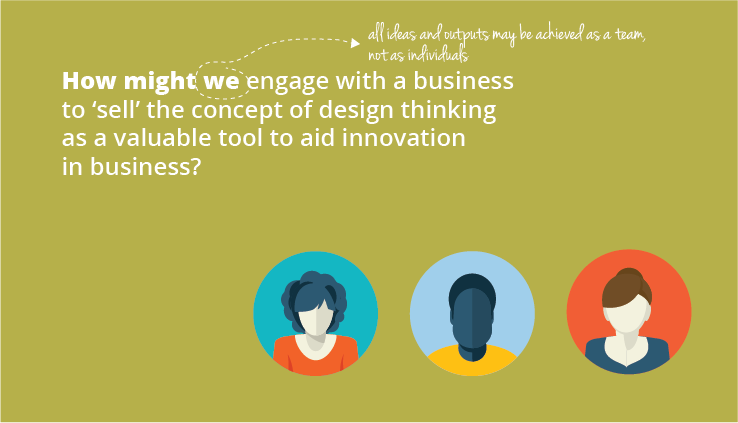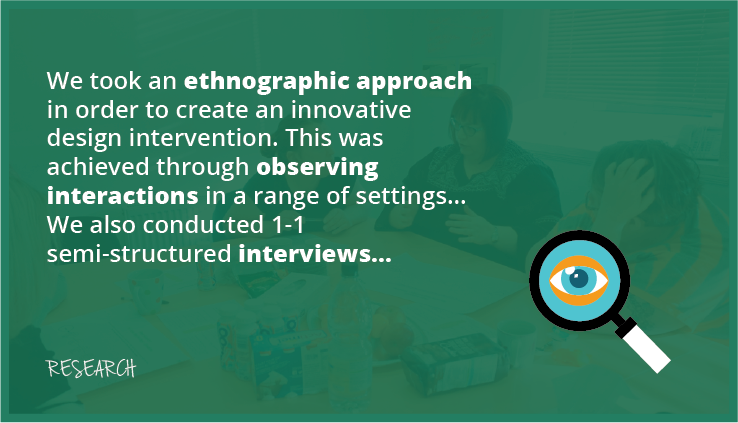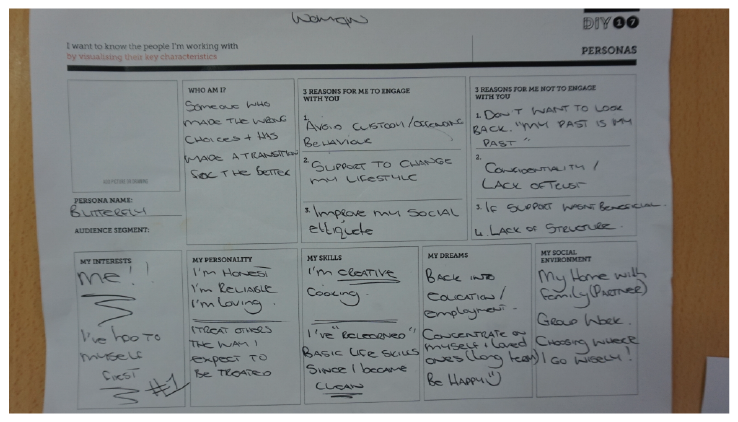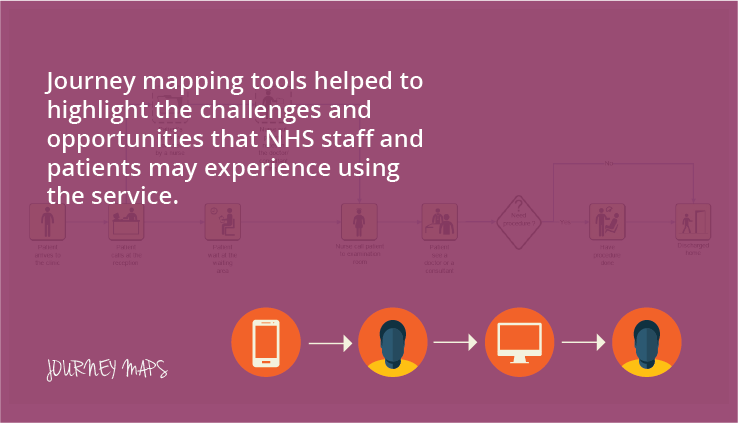Selling innovation – Part 1
I was recently asked “How would you engage with a business to ‘sell’ the concept of design thinking as a valuable tool to aid innovation in business?”
The following is my response along with some examples from my own experience.
The Design Challenge
When I looked at this question it began to dawn on me that this question in itself could become an insight proposition or a ‘How Might We’ question that kicks off a design challenge.
In effect I am going to begin by using design thinking as an approach to answer this question.
Therefore the question now becomes ‘How might we engage with a business to ‘sell’ the concept of design thinking as a valuable tool to aid innovation in business?’

It’s important to note here that if I were to take a design thinking approach that team work is conducive to innovation. So the ‘We’ in HMW reiterates that all ideas and outputs may be achieved as a team, not as individuals.
Research
In order to ‘Sell’ the concept of design thinking you need to have a good understanding of the design, business and innovation landscape where you are at. This involves looking at current quantitative and qualitative research to gain a deeper understanding of the context.
Reports like the recently published “Design Value: the role of design in innovation” (AHRC funded project) help to examine the relationship between design and innovation and how design contributes to innovation within the UK.
Some of the benefits they highlight in this report from companies that use design for innovation are as follows:
- Companies that used design for process and strategy made an impact on all types of innovation.
- When feedback from clients and sales of innovation are good, companies usually see this as a consequence of good design.
- Capabilities in design is among the five most important sources of competitive advantage.
- In small companies a positive perception about design by the CEO defines the understanding and use of design in the company.
- For a large group of companies design is actually the ‘R’ in their ‘Research & Development’ activities.
These findings also correlate with other reports from industry like the Design Councils’ ‘Leading Business by Design’ report which looks at why and how business leaders invest in design.
Ethnography
Moving onto qualitative research it would be good to take an ethnographic approach and get out in the field and talk to representatives from business.
This could be done through a series of interviews with a key to finding out about what their understanding is of design thinking. Interviews can also help you find out what their needs, goals and motivations are regarding the subject.
During my work as an Associate Service Designer with IRISS on the Glen Isla project, a women’s criminal justice centre based in Arbroath, we were seeking to better understand relationships and how they were formed between women and staff and women and each other.
So we took an ethnographic approach in order to create an innovative design intervention.
This was achieved through observing interactions in a range of settings.
We also conducted interviews with women and staff in the centre to better understand of what their experience was like working or attending at Glen Isla and the relational aspect of their experience.

Target User & Persona Profiles
This kind of research can then inform who your target user is and the different types of user you are aiming at. It can aide the creation of persona profiles that represent a typical business user.
Persona profiles help to define the needs, wants and motivations of real people and user groups. They can also help highlight barriers and challenges they face in their business setting.
During my co-design work with the women and practitioners at Glen Isla we created persona profiles.
These were used as a way for the women and practitioners to be able to share their experience in a sensitive, more representative manner.
Through persona profiles they were able to highlight any barriers and needs they faced.

You may discover that the wants, needs, challenges and barriers of a small business may be very different from that of a large business but there may be surprising overlaps and/or similarities here too.
Journey Maps
You can then use these persona profiles to begin to journey map the experiences of your users (the business we’re targeting) with their experience of innovation at the moment and the various touchpoints they use to become engaged or aware about innovationn e.g. industry websites, literature, case studies etc. to find out more about design thinking and innovation.
This may also throw up challenges, barriers, and opportunities for possible solutions for you to ‘sell’ the concept of design and innovation to your business user.
During my work with NHS Fife project journey mapping tools helped to highlight the challenges and opportunities that NHS staff and patients may experience when in a hospital department.
As a result of this staff could recognise gaps or friction points and better audit the service.

Touchpoints
For the remainder of this blog entry I will be focusing on a workshop/sprint touchpoint in this hypothetical journey map.
The sprint format I believe could be one of the most engaging ways to connect with local business and sell the benefits of design thinking and innovation.
Find out more about why I believe this is so in Part 2 of ‘Selling Innovation’.

